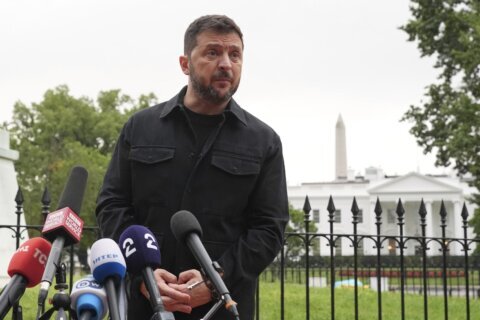Even after a year and the arrests of hundreds, thousands of pages of documents gathered and subpoenas being issued, there is still no clear understanding of how the Jan. 6 riot was organized.
As a result, a former Department of Homeland Security official believes it too early to know how much was learned.
“The lessons learned have not been fully identified yet, and that’s unfortunate,” said Brian Murphy, who was Acting Undersecretary of Homeland Security for Intelligence Analysis at the time.
- Capitol riot: Domestic intelligence officials blamed
- More National Security News
- More on the Capitol Riot
While concrete lessons to prevent a repeat of the riot may take months to glean, officials have learned other valuable information.
Most of the blame has been heaped onto the people caught on video storming through the Capitol. They assaulted police officers with chemicals, flagpoles, chains, fire extinguishers and anything they could get their hands on.
They broke into offices, stole personal items that belonged to evacuated members of Congress and terrified staffers as they hid in closets and under desks. Some of them marauders chanted, “Hang Mike Pence” and other hateful language.
The Jan. 6 congressional committee is investigating how the riot came about and who enabled it. The committee members have been looking at documents and interviewing prominent people, mostly in the political world.
One key element that officials have learned is that there was a completely different ecosystem working downstream from those in President Donald Trump’s orbit. That network fertilized the seeds of anger spread mostly by the “Stop the Steal” movement.
This movement consisted of ordinary Americans in far-flung places using social media to connect, plot and even execute the invasion of the Capitol.
“As of today,” said Attorney General Merrick Garland on the eve of the anniversary of the riot, “we have arrested and charged more than 725 people in almost all 50 states and the District of Columbia.”
As it unfolded, it appeared to be an organic protest that got out of hand, but both the Justice Department and congressional investigations have revealed that planning for violence at the Capitol had been underway for months by numerous, disparate groups that came together for the first time.
But this was no ragtag, amateur assault.
“They certainly were more capable than we expected. I think there was probably some chatter out there or scraps (of information) that people were not paying attention to,” said former Deputy Director of the U.S. Secret Service A.T. Smith.
In the months leading up to the riot, those “scraps” Smith referred to raised red flags, but law enforcement officials took no action because they didn’t understand how they all connected.
“It’s unfortunate that the intelligence community failed on that front,” said Smith. He knows what an intelligence failure looks like: It happened on Sept. 11, 2001.
“I was there on 9/11, and after 9/11, it was incumbent upon all of the agencies to share information and focus on intelligence.”
Smith said the intensity that many members of the IC applied to their work in the aftermath of the Sept. 11, 2001 attack is gone.
“Sadly, things wane over time, and that is certainly something that they need to look at going forward — to make sure that you stay connected, and things do get reported. There was really no excuse, not to be on top of this, particularly after the lessons we learned on 9/11.”
Not only did national security agencies miss critical details about the Jan. 6 attack, but a gaping, self-inflicted hole had been ripped into the domestic intelligence-sharing architecture, which was designed to prevent such attacks from happening.
That hole, according to Murphy, was created by Homeland Security leadership which, well before the 2020 election, essentially ordered there be no reporting of certain domestic intelligence concerns for fear it would anger President Donald Trump.
“There were very few people looking at the state, local and federal level and those that were, were not able to put it (the threat) together, because they didn’t have the resources or mission to look across the nation at a range of threats,” Murphy said.
A year after the riot, the list of lessons learned is incomplete, but according to Smith, there is one thing that doesn’t require an investigation that law enforcement and intelligence officials should’ve learned.
“Readiness is the key. Now they are ready. No one wants to repeat what happened a year ago,” Smith said.
- Where we are with cases against the accused Capitol rioters
- ‘Not taking any chances’: US Capitol Police chief talks security ahead of Jan. 6 anniversary
- PHOTOS: WTOP reporter’s retrospective of the Capitol riots, one year later
- GW professor: Persistent misinformation leading to Capitol riot threatens democracy
- VIDEO: Covering the insurrection
- Can images from Jan. 6 insurrection traumatize your child?
- More coverage of the Capitol Riot








